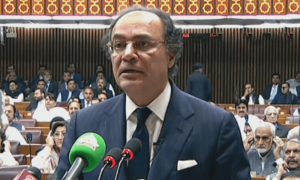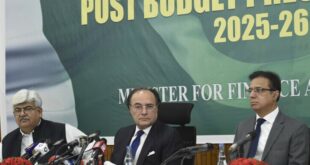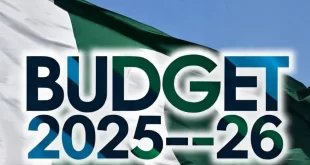
Aftab Maken
ISLAMABAD: The federal government on Tuesday unveiled a Rs17.6 trillion balanced budget for the fiscal year 2025-26, with total projected revenues and expenditures both standing at Rs17,573 billion.
According to official budget figures, the Federal Board of Revenue (FBR) is tasked with collecting Rs14,131 billion in tax revenue, while non-tax revenue is estimated at Rs5,147 billion, pushing the gross revenue receipts to Rs19,278 billion. However, after transferring Rs 8,206 billion to the provinces under the NFC Award, the federal government is left with net revenue receipts of Rs 11,072 billion.
To bridge the Rs 6,501 billion gap between income and spending, the government plans to rely on various forms of borrowing and non-tax sources. These include Rs 2,874 billion from non-bank borrowing, Rs 3,435 billion through bank borrowing (T-Bills, PIBs, and Sukuk), Rs 106 billion from net external receipts, and Rs 87 billion from privatization proceeds.
On the expenditure side, current spending dominates the budget with Rs16,286 billion, nearly 93% of the total outlay. Interest payments alone will consume Rs 8,207 billion, followed by defence spending at Rs 2,550 billion, pensions at Rs1,055 billion, and subsidies amounting to Rs1,186 billion. An additional Rs1,928 billion has been earmarked for grants and transfers to provinces and others, while the civil government’s running cost is set at Rs971 billion. A contingency provision of Rs389 billion has also been included.
Development and net lending expenditures have been kept at Rs1,287 billion, with Rs1,000 billion allocated for the Public Sector Development Programme (PSDP) and Rs287 billion for net lending.
This budget underscores the government’s tight fiscal space, with limited room for development spending amid rising debt servicing and defence needs. However, the balance achieved between revenues and expenditures suggests a commitment to fiscal discipline, likely aimed at satisfying domestic and international financial stakeholders.
 BeNewz
BeNewz



